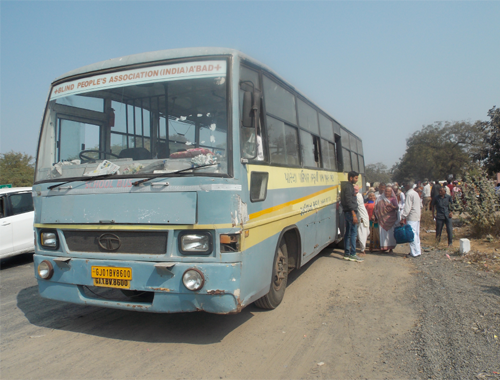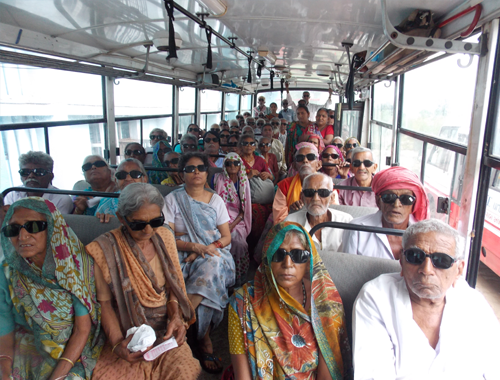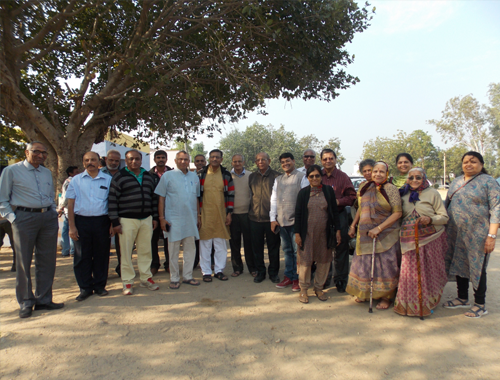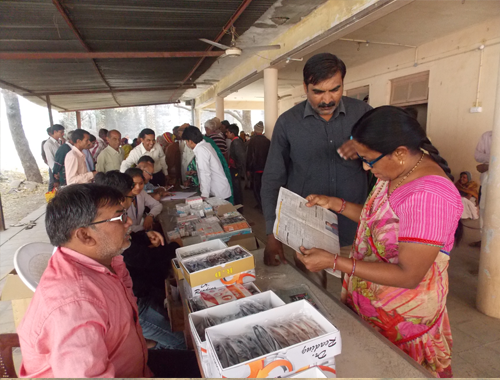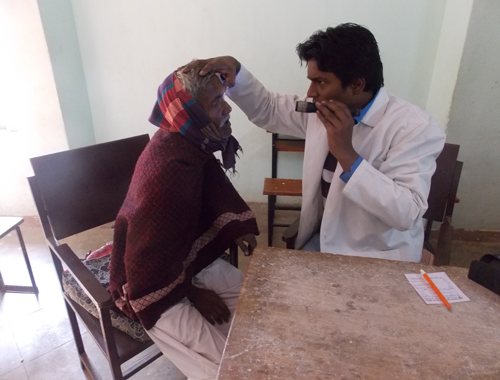Eye Camp
Why community based eye care is essential in India– According to World Health Organization (WHO) estimates, there are 39 million blind and another 246 million visually impaired people in the world. The burden of blindness in India contributes to nearly one fifth of the global blindness burden. Cataract and refractive errors constitute more than 80% of the blindness and are largely avoidable. Despite gains witnessed in global blindness elimination efforts, the current figures reflect the need for a sustained effort to achieve the goal of elimination of avoidable blindness as envisioned by ‘Vision 2020: The Right to Sight’ by the year 2020.
India has demonstrated a strong commitment towards the reduction of prevalence of overall blindness. India was the first country to initiate the National Program for Control of Blindness (NPCB) in 1976. Despite achieving a high cataract surgical rate of over 5000 surgeries per million population recently, the load of blindness due to cataract is still high. Similarly, refractive errors remain a formidable challenge that needs to be addressed. Due to a rise in risk factors, diabetic retinopathy and glaucoma are also emerging as important conditions that need to be addressed at all levels of health care.
Principally, primary level eye care aims to deliver affordable services to all, irrespective of the socio-economic abilities of individuals. Primary eye care largely refers to a combination of activities encompassing promotive, preventive, therapeutic and rehabilitation services delivered at community level to avert serious sequels resulting in blindness. Since primary eye care is a by-product of larger primary health care, it retains its basic principles of community participation, inter-sectoral co-ordination, use of appropriate technology and equitable distribution of resources.
The components of primary eye care include raising adequate awareness about eye health and the prevention of common eye diseases through health education. Many of the eye conditions such as trachoma, nutritional blindness due to vitamin A deficiency and corneal injuries can be prevented by following simple steps such as -face washing, consuming a vitamin A-rich diet and by taking appropriate care while playing, farming or celebrating festivals like Holi or Diwali. Primary eye care also includes timely detection of common eye diseases such as cataract and refractive errors, the leading causes of visual impairment. Refractive errors can be addressed effectively by ophthalmic assistants through the primary eye care delivery network by provision of spectacles. Screening targeted to identify diabetic retinopathy and glaucoma can also be initiated at this level with provision of essential equipment and adequate training. The patients identified with diseases should be referred to appropriate secondary and tertiary levels for further management. Rehabilitation of people with blindness and low vision can also be carried out at the primary eye care level itself. It is recognized that a majority of cases with avoidable blindness can either be prevented or treated by efficient utilization of existing resources in the community and through creating eye health promotion programs.
In 2004, India adopted ‘Vision 2020: The Right to Sight’ program following a global movement, reiterating the commitment towards elimination of blindness by the year 2020 by establishing 20,000 primary eye care units. These units called ‘vision centers’ act as the first point of interface of the population with skilled, comprehensive eye care service providers. The program has achieved increased public awareness, professional and political commitment for the prevention of blindness. In India, 4000 vision centers in 10th Five year plan and 5000 vision centers in 11th five year plan were to be established but the targets could not be achieved. Recently, the twelfth five year plan (2012-17) has committed to developing 5000 vision centers with revised strategies to achieve the targets.
India, being a vast, heterogeneous country on many fronts needs diverse primary eye care development plans. Currently, primary eye care (PEC) services are delivered through varied models of eye care. It is imperative that these working models be reviewed to assess their strengths and weaknesses and their potential contribution in reducing the blindness burden.

